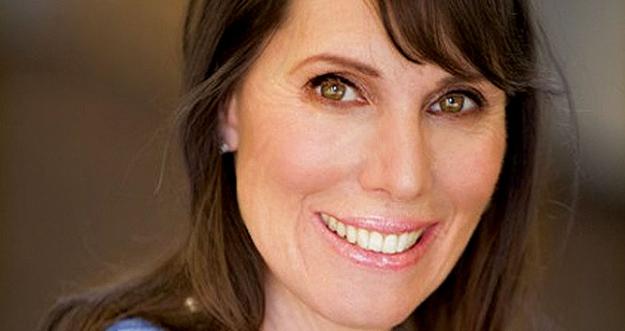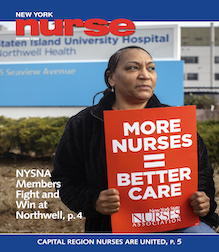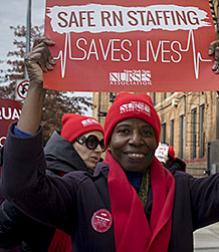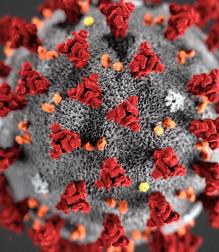
Student debt levels are nothing short of a national crisis.
Loan debts for students in this country have reached an astonishing record amount — $1.2 trillion, a staggering increase of nearly five-fold over the last decade, now surpassing both total U.S. credit card and auto loan debt. From across the range of colleges and universities — state and private — seven in ten seniors who graduated in 2013 had student loan debt, carrying an average of $28,400 each.
Nursing students are hardly exempt.
Huge costs v. flat incomes
It’s well established that those with higher levels of education earn more and have lower rates of unemployment. But getting there gets more difficult as costs skyrocket.
The costs of a college education are rising at a significantly faster rate than general inflation, far outpacing average real wage growth. The U.S. Department of Education reports that the average annual cost of college after adjusting for inflation rose 32% between the school years 2003-2013. Meanwhile, average real wages over the same period were more or less stagnant, rising less than 2 percent.
Students — and the families who often help finance college or co-sign for loans — are struggling with rising tuition bills and taking on increasing amounts of debt. More than 40 million students are current borrowers, and student loans are one of the largest financial burdens faced by working families today.
Nursing student debt
A National Student Nurse Association (NSNA) analysis of loan debt across all graduates over the past four years reveals that nursing students have mirrored national trends, as they have increased borrowing in order to attain their degrees. Almost three-quarters of nursing students will graduate owing student loans. Like all new college graduates today, new nursing graduates face a challenging employment market.
Consistent with national trends, student loans are the largest source of student funding for undergraduate nursing education. While BSN students have higher debt, ADN graduates also have considerable debt.
While healthcare graduates have traditionally had lower unemployment rates than liberal arts and social science graduates, the data from the NSNA New Graduate Annual Surveys suggest that they are more likely to be in debt than in the past, and that the money borrowed may impede their future choices in life, including decisions regarding academic progression.
Those without employment face even more serious consequences. More than one–third of new nurse graduates who reported having loans to repay were unemployed.
What can be done
The student loan default rate is now at a two-decade high. Overall, nearly one in eight of today’s graduates will default within two years of starting their loan repayment. Even employed college graduates struggle under the debt burden, contributing to an urgent need for strategies to make quality education more affordable — an issue that is now drawing the attention of state and federal candidates.
The passage of the Nurse Training Act of 1964 established a student loan program through the Health Resources and Services Administration (HRSA) for undergraduate nursing students. Today, however, HRSA grant funding is not focused on undergraduate nursing or addressing the bedside nursing shortage faced in many areas in the U.S. New federal initiatives need to devote resources to immediate debt relief for students and meaningful scholarship and other tuition assistance going forward.
Every student nurse, or nursing school graduate still paying off student debt, should be directed to the ForgiveMyStudentDebt.org website. It provides detailed information about existing programs designed to reduce monthly payments and, for some, forgive outstanding debt.
Campaigns around the country, including in New York, are pressing forward, calling for debt relief and for reduced college costs. The Debt Free Future Campaign, a partnership of Jobs with Justice and the U.S. Student Association, launched a campaign to publicize available programs that make college more affordable, rein in student lenders through stronger regulations and win debt relief for working families. The campaign estimates that 33 million student borrowers (over 82%) are eligible for some debt forgiveness under existing government debt forgiveness programs, yet less than 223,000 are enrolled at present.
NYSNA places a very high priority on alleviating the student debt crisis, as these crushing debts have health consequences for students and their families. Excessive school costs impede higher education and the job opportunities a college degree can provide. For our profession, higher costs and the prospect of debt serve to discourage nursing students at a time when national need for nurses grows.




